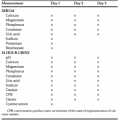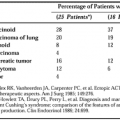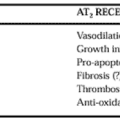MISCELLANEOUS LESIONS OF THE OPTIC CHIASM
TRAUMATIC CHIASMAL SYNDROME
Vision loss that follows closed-head trauma usually is attributed to contusion or laceration of the optic nerves occurring abruptly at the time of impact. Much less frequently, a chiasmal syndrome may be identified by the pattern of field loss and associated deficits, including diabetes insipidus, anosmia, CSF rhinorrhea, and fractures of the sphenoid bone. From a report of several such patients,104 it was clear that neither the degree of vision loss nor the extent of diabetes insipidus was necessarily related to the severity of craniocerebral trauma. Transient diabetes insipidus was present in approximately one-half of these patients. Rarely, panhypopituitarism may occur.105 The traumatic chiasmal syndrome may occur more commonly than recognized because of its frequent association with extensive basilar skull fractures and its concomitant altered level of consciousness and high mortality rate.106
Lesions of the hypophysial stalk and, more frequently, of the hypothalamus may follow blunt head trauma. Hypothalamic lesions have been noted in 42% of patients who died after head trauma.107 Ischemic lesions and microhemorrhages were attributed to shearing of small perforating vessels.
Stay updated, free articles. Join our Telegram channel

Full access? Get Clinical Tree






